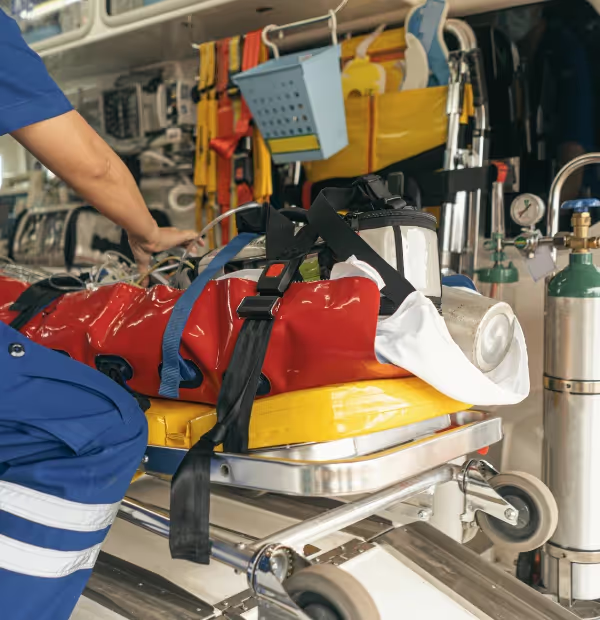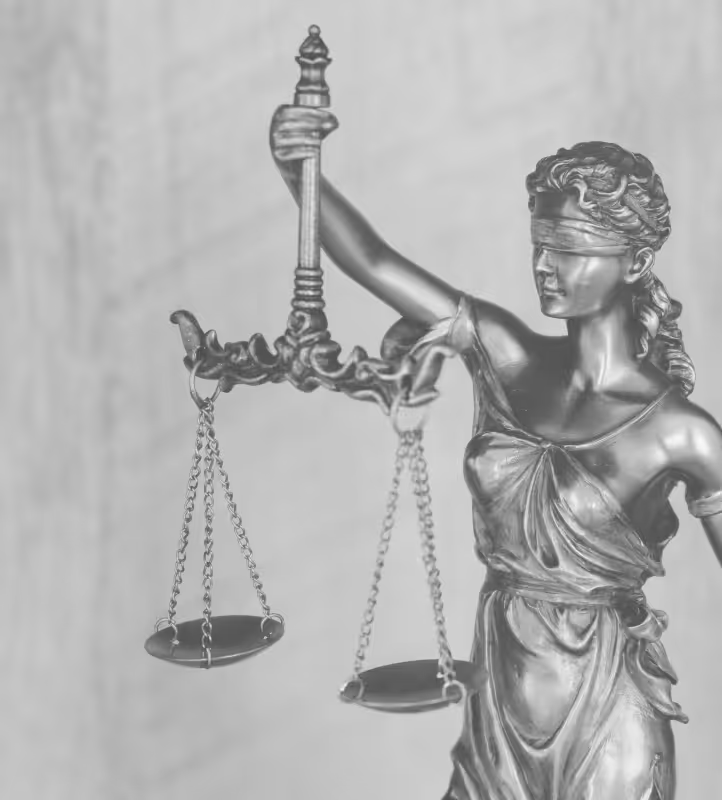Dangerous Driving Causing Death

Defending a Dangerous Driving Occasioning Death Charge
Facing a dangerous driving occasioning death charge can be an overwhelming and life-changing experience. Our team at Brightstone Defence has extensive experience defending clients charged under Section 52A of the Crimes Act 1900 (NSW) and understands the complex nature of these cases.
Detailed Description:
- This offence applies when death results from driving that is reckless, intoxicated, or objectively dangerous.
- Penalties can reach up to 10 years imprisonment, or 14 years for aggravated cases.
- Early and strategic legal representation can significantly impact the outcome, including reducing penalties or disputing charges altogether.
At Brightstone Defence, our experienced criminal lawyers have successfully defended clients across NSW in complex traffic and fatality-related matters. We can help you understand the evidence, build a strong defence, and protect your rights every step of the way.
What is Dangerous Driving Occasioning Death?
Dangerous driving occasioning death is a serious criminal offence that occurs when a person causes the death of another person as the result of dangerous or reckless driving.
This offence is set out under Section 52A of the Crimes Act 1900 (NSW), encompassing:
. . . . (1) Dangerous driving occasioning death A person is guilty of the offence of dangerous driving occasioning death if the vehicle driven by the person is involved in an impact occasioning the death of another person and the driver was, at the time of the impact, driving the vehicle--
. . . . . . . . (a) under the influence of intoxicating liquor or of a drug, or
. . . . . . . . (b) at a speed dangerous to another person or persons, or
. . . . . . . . (c) in a manner dangerous to another person or persons.
A person convicted of an offence under this subsection is liable to imprisonment for 10 years.
What does “Dangerous” mean?
The term “dangerous” in regard to driving offences refers to more than minor mistakes and carelessness. To be charged with this offence an individual must have been objectively driving dangerously. This means that the reasonable person would consider the conduct a risk to others on the road. This can include:
- Excessive speeding
- Running red lights
- Aggressive or reckless manoeuvres
- Driving under the influence of drugs or alcohol
- Driving whilst extremely tired or distracted
Elements the Prosecution Must Prove
To be guilty of this offence, the prosecution must prove beyond reasonable doubt that you:
- Were involved in an impact occasioning the death of another person
- Were driving a vehicle at the time of impact
- Were doing so under the influence of alcohol or drugs, or at a speed dangerous to another person, or in a manner that would be dangerous to another person
Circumstances in which a vehicle is involved in an impact are legislated at Section 52A(5) of the Crimes Act 1900.
Possible Defences
Dangerous driving causing death is an extremely serious offence as it involves the death of another individual. Obtaining legal advice is crucial to know your options.
The possible defences may include:
- The death occurred was not in relation to the dangerous driving
- The driving was not “dangerous"
- Sudden medical episode
- Mechanical failure
- Duress
- Necessity
Potential Penalties
The maximum penalty for dangerous driving occasioning death is 10 years imprisonment. Aggravated dangerous driving occasioning death carries a maximum of 14 years imprisonment. You could additionally have a fine imposed and your licence suspended or disqualified.

Legal Process
& Options
Dangerous driving offences carry serious consequences, so seeking early legal advice is crucial. A skilled lawyer can help you understand your rights, prepare your defence, and strive for the best possible outcome.
Pleading
Not Guilty
If you plead not guilty to a dangerous driving charge, your case will proceed to a defended hearing in the Local Court. This means the prosecution must prove beyond a reasonable doubt that your driving was dangerous and that it posed a real risk to the public.
During the hearing, your criminal defence lawyer will have the opportunity to:
- Challenge the evidence presented by the prosecution, such as witness testimony, police reports, or dashcam footage
- Cross-examine prosecution witnesses
- Present evidence and call witnesses on your behalf
- Argue that your driving did not meet the legal definition of “dangerous” or that other factors caused the incident
Pleading not guilty allows you to contest the charge and tell your side of the story. However, it often means the legal process will take longer and may involve more complexity, so having skilled legal representation is essential to help navigate the process and advocate for the best possible outcome.
Pleading
Guilty
If you decide to plead guilty to a charge of dangerous driving, you are admitting to the offence. This can demonstrate remorse and cooperation, which may work in your favour during sentencing.
After your guilty plea is entered, the matter will move to a sentencing hearing. During this hearing, the court will consider several factors when determining your penalty, including:
- The seriousness of the driving and whether anyone was injured
- Your prior traffic or criminal history
- Whether you have shown remorse or taken steps to address the behaviour (for example, attending a traffic offender program)
- The impact on any victims
- Any mitigating circumstances (for example, medical issues, momentary lapse in judgment)
By pleading guilty early, you may also be entitled to a sentencing discount, which can reduce the severity of the penalty imposed, potentially avoiding a harsher sentence.
Even if you intend to plead guilty, it is still highly advisable to seek legal advice. A lawyer can help you present your case in the best light and may be able to assist in reducing the penalty through strong submissions on your behalf.
Dangerous driving is a serious criminal offence that occurs when a person drives a motor vehicle in a manner that is dangerous to the public, resulting in:
- Death (s 52A(1)) or
- Grievous bodily harm (GBH) (s 52A(3))
It falls under section 52A of the Crimes Act 1900 (NSW).
“Dangerous” means more than simply negligent or careless, it involves driving in a way that poses a real and obvious risk to the safety of others.
This includes:
- Excessive speeding
- Driving under the influence of alcohol or drugs
- Aggressive driving (e.g., road rage, tailgating)
- Ignoring traffic signals or rules
- Street racing
- Driving while fatigued or distracted
It is assessed objectively, i.e., would a reasonable person see this as dangerous?
A dangerous driving offence becomes aggravated if it involves:
- High-range alcohol (BAC over 0.15)
- Illicit drugs in system
- Excessive speed (more than 45 km/h over the limit)
- Driving to escape police pursuit
- Driving while fatigued to the point of impairment
These increase the maximum penalties and make a custodial sentence more likely.
Yes. Conviction for dangerous driving results in automatic licence disqualification.
For dangerous driving occasioning death:
- Automatic disqualification: 3 years (can be reduced to 12 months)
For dangerous driving occasioning GBH:
- Automatic disqualification: 3 years (can be reduced to 12 months)
In aggravated cases, longer disqualifications or interlock orders may apply.
If you are charged with dangerous driving, it is crucial to seek legal advice as soon as possible. A lawyer can guide you on plea options, defence strategies, and help mitigate penalties. Contact Brightstone Defence immediately to protect your rights and future.
Dangerous driving is a serious criminal offence that occurs when a person drives a motor vehicle in a manner that is dangerous to the public, resulting in:
- Death (s 52A(1)) or
- Grievous bodily harm (GBH) (s 52A(3))
It falls under section 52A of the Crimes Act 1900 (NSW).
“Dangerous” means more than simply negligent or careless, it involves driving in a way that poses a real and obvious risk to the safety of others.
This includes:
- Excessive speeding
- Driving under the influence of alcohol or drugs
- Aggressive driving (e.g., road rage, tailgating)
- Ignoring traffic signals or rules
- Street racing
- Driving while fatigued or distracted
It is assessed objectively, i.e., would a reasonable person see this as dangerous?
A dangerous driving offence becomes aggravated if it involves:
- High-range alcohol (BAC over 0.15)
- Illicit drugs in system
- Excessive speed (more than 45 km/h over the limit)
- Driving to escape police pursuit
- Driving while fatigued to the point of impairment
These increase the maximum penalties and make a custodial sentence more likely.
Yes. Conviction for dangerous driving results in automatic licence disqualification.
For dangerous driving occasioning death:
- Automatic disqualification: 3 years (can be reduced to 12 months)
For dangerous driving occasioning GBH:
- Automatic disqualification: 3 years (can be reduced to 12 months)
In aggravated cases, longer disqualifications or interlock orders may apply.
If you are charged with dangerous driving, it is crucial to seek legal advice as soon as possible. A lawyer can guide you on plea options, defence strategies, and help mitigate penalties. Contact Brightstone Defence immediately to protect your rights and future.
SUCCESS CASES & ARTICLES
Brightstone Defence delivers focused criminal defence services year-round and has built a strong track record of successful outcomes.
Meet our lawyers
WORLD CLASS
REPRESENTATION
100+ 5 Star Reviews
Personalised legal strategies tailored to each case
Recognised leaders in criminal defence law
Free initial consultation and case evaluation
Proven success in high-stakes and complex cases
Get AN instant estimated Quote
and a free consultation session
Facing criminal charges? Our experienced criminal defence lawyers are here to help. Book your free consultation now to discuss your case and understand your options.







